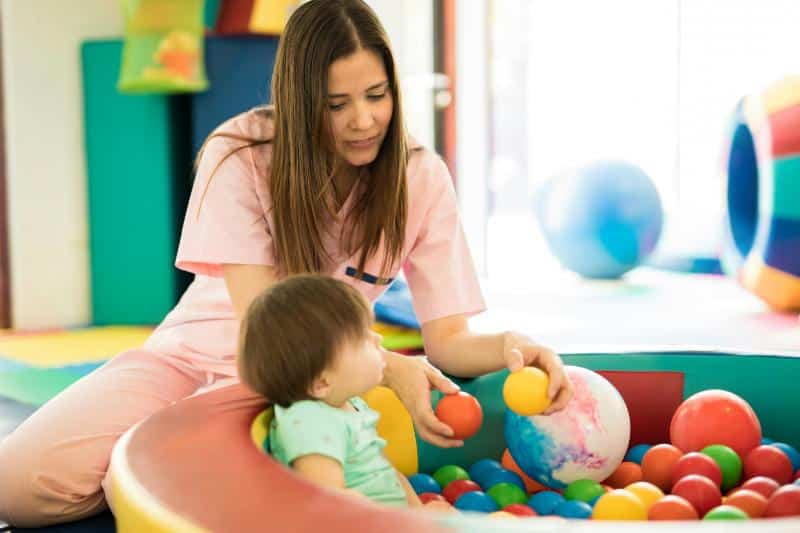As we navigate the challenges and joys of raising children, one thing is certain: it’s a journey that requires wearing many hats. From being a teacher, chef, referee, and therapist all at once, parenting demands patience and resilience. And when it comes to our children’s health, there may be times when we need to step into another role: that of a physical therapist. The world of pediatric physical therapy can feel overwhelming for parents without prior knowledge or experience. But fear not; this guide equips you with essential information about physical therapy for your child.

1. Understanding the Need for Physical Therapy
Physical therapy becomes necessary when a child suffers an injury or has a condition that impedes normal physical function. Your child may need physical therapy for a torn ACL, which is a common injury in children who participate in sports or physical activities that involve sudden changes in direction and jumping. The ACL (anterior cruciate ligament) is one of the main ligaments in the knee and helps to stabilize it during movement.
Physical therapists are specialized in designing programs that aid recovery, restore function, and alleviate pain associated with such injuries. For a torn ACL, therapy often involves a combination of stretching, strengthening, and balance exercises. The ultimate goal is not only to promote healing but also to prevent further injury and to enable a return to normal physical activities.
2. The Role of a Physical Therapist
A physical therapist plays a crucial role in your child’s recovery and overall wellness. They conduct a thorough evaluation of your child’s condition, including assessment of joint motion, muscle strength, and endurance, as well as performance of tasks and movements necessary in daily life. Based on this assessment, they create a personalized treatment plan that targets the specific needs of your child.
The therapist carries out the plan using guided exercises, hands-on therapy, and potentially therapeutic devices. They regularly assess your child’s progress, adjusting the plan as needed for optimal recovery. In addition to the physical aspect, therapists offer emotional support and education, helping children understand and manage their condition.
3. Initial Evaluation
The initial evaluation is a critical step in the physical therapy process. During this session, the physical therapist conducts an in-depth assessment of your child’s physical abilities, pain levels, and overall health status. They observe and analyze your child’s movements, strength, balance, and flexibility, as well as any specific difficulties they might have.
During the evaluation, we will discuss your child’s medical history, current symptoms, and therapeutic goals. Your input as a parent is invaluable in guiding the therapist to design an effective treatment plan. The initial evaluation sets the groundwork for therapy sessions, leading to your child’s recovery and improved quality of life.
4. Treatment Techniques
Physical therapy uses various techniques to meet the unique needs of each child. This may involve manual therapy, where the therapist uses hands-on movements to improve function and reduce discomfort. Therapeutic exercises also play a key role in enhancing strength, flexibility, endurance, and balance.
Other techniques may use equipment like exercise balls, resistance bands, or specialized mechanical devices. Hydrotherapy, electrical stimulation, and cold or heat therapy may also be used if appropriate for the child’s condition. The goal is to aid recovery, improve function, and enhance the child’s quality of life.
5. Parental Involvement and Home Programs
As a parent, your involvement in your child’s physical therapy journey is crucial. By actively participating in sessions, you gain valuable insights into your child’s progress, understand their struggles, and learn techniques to support them at home. You become an extension of the therapy, reinforcing what is taught during sessions and ensuring consistency in exercises.

Furthermore, your engagement can also have a profound impact on your child’s motivation and resilience during recovery. Physical therapy can be a daunting experience for children, and your presence provides them with a sense of comfort and reassurance. Together, you and your physical therapist form a collaborative team focused on achieving the best possible outcome for your child.
6. Progress and Patience
Progress in physical therapy takes time, perseverance, and patience from the child and parent. Initially, small improvements may be seen, like increased range of motion or decreased pain. As therapy continues, these advancements become more significant, enhancing strength, balance, and overall functionality.
Every child’s recovery timeline is unique, so comparing progress with others can be disheartening. Stay patient, celebrate small victories, and trust the expertise of the physical therapist. Witness the transformative power of physical therapy as your child regains strength, confidence, and independence.
Physical therapy is an essential tool in promoting your child’s health and well-being. By understanding its role, techniques, and the importance of parental involvement, you can support your child as they journey towards a full recovery. Remember to communicate openly with your physical therapist, ask questions when needed, and celebrate every milestone achieved. With this guide by your side, you are now equipped to navigate the world of pediatric physical therapy with confidence and ease.
